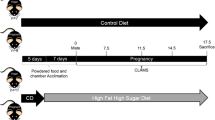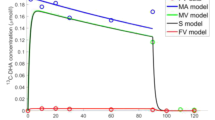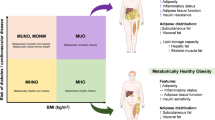Abstract
During the first two-thirds of gestation, the mother is in an anabolic condition, increasing her fat depots thanks to both hyperphagia and enhanced lipogenesis. During the last third of gestation, the mother switches to a catabolic condition. Glucose is the most abundant nutrient crossing the placenta, which causes maternal hypoglycemia despite an increase in the gluconeogenetic activity. Adipose tissue lipolytic activity becomes enhanced, increasing plasma levels of FFA and glycerol that reach the liver; consequently there is an enhanced production of triglycerides that return to the circulation in the form of very low density lipoproteins (VLDL). Glycerol is also used as a preferential gluconeogenetic substrate, saving other more essential substrates, like amino acids, for the fetus. Under fasting conditions, fatty acids are converted into ketone bodies throughout the β-oxidation pathway, and these compounds easily cross the placental barrier and are metabolized by the fetus.
An enhanced liver production of VLDL-triglycerides together with a decrease in adipose tissue lipoprotein lipase (LPL) and an increase in plasma activity of cholesterol ester transfer protein causes both an intense increment in these lipoproteins and a proportional enrichment of triglycerides in both low and high density lipoproteins. Maternal triglycerides do not cross the placenta, but the presence of LPL and other lipases allows their hydrolysis, releasing fatty acids to the fetus. Under fasting conditions, the maternal liver uses circulating triglycerides as ketogenic substrates. Around parturition there is an induction of LPL activity in the mammary glands, driving circulating triglycerides to this organ for milk synthesis, allowing essential fatty acids derived from the mother’s diet to become available to the suckling newborn.
European Journal of Clinical Nutrition (2000) 54, Suppl 1, S47–S51
This is a preview of subscription content, access via your institution
Access options
Subscribe to this journal
Receive 12 print issues and online access
$259.00 per year
only $21.58 per issue
Buy this article
- Purchase on SpringerLink
- Instant access to full article PDF
Prices may be subject to local taxes which are calculated during checkout
Similar content being viewed by others
Author information
Authors and Affiliations
Corresponding author
Rights and permissions
About this article
Cite this article
Herrera, E. Metabolic adaptations in pregnancy and their implications for the availability of substrates to the fetus. Eur J Clin Nutr 54 (Suppl 1), S47–S51 (2000). https://doi.org/10.1038/sj.ejcn.1600984
Published:
Issue Date:
DOI: https://doi.org/10.1038/sj.ejcn.1600984



